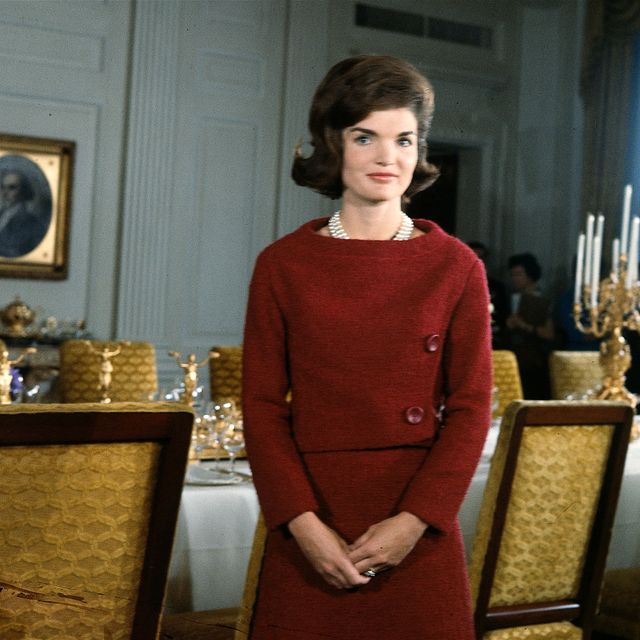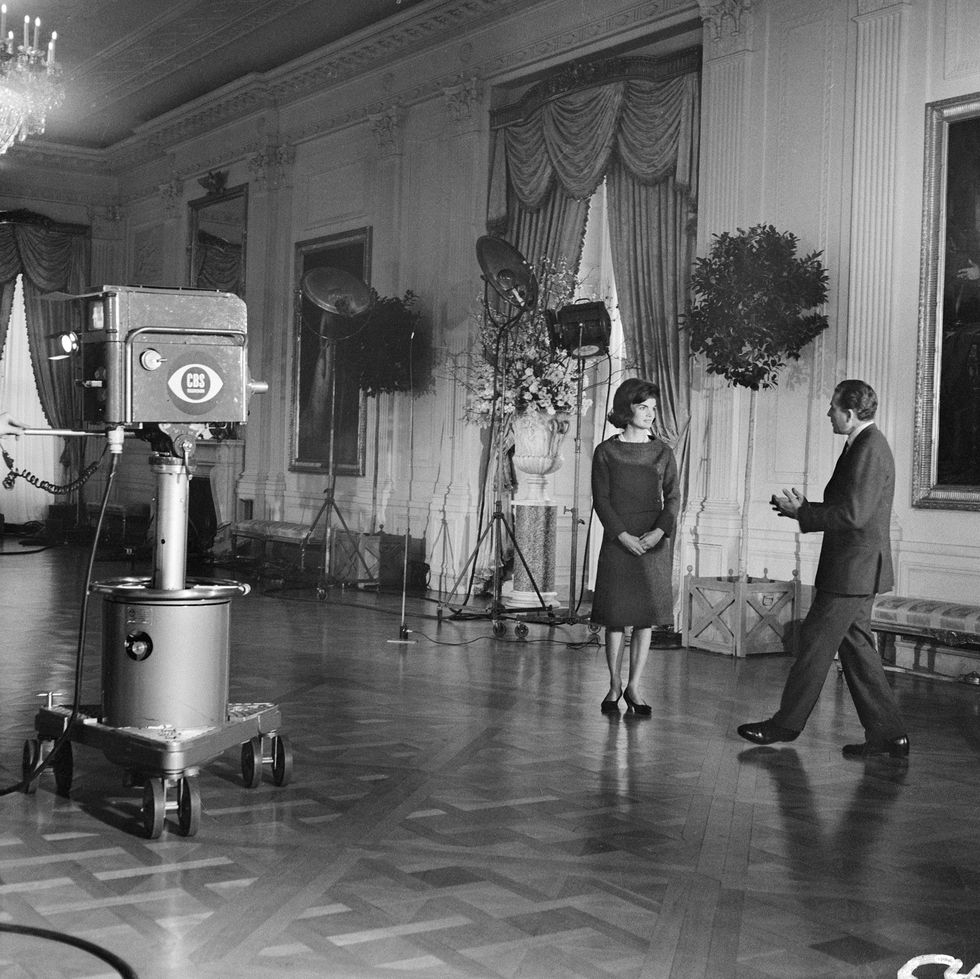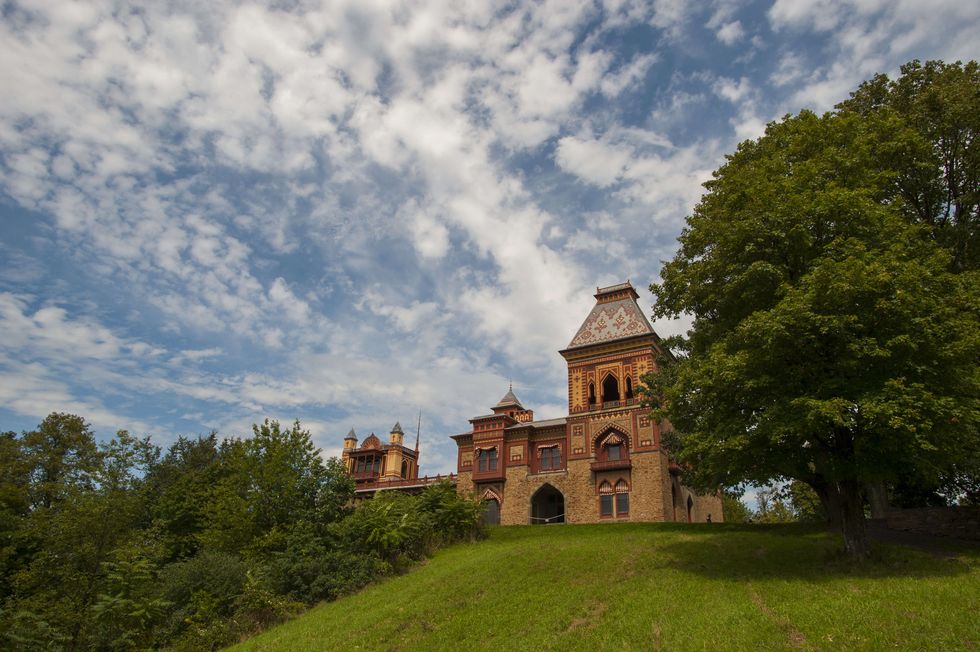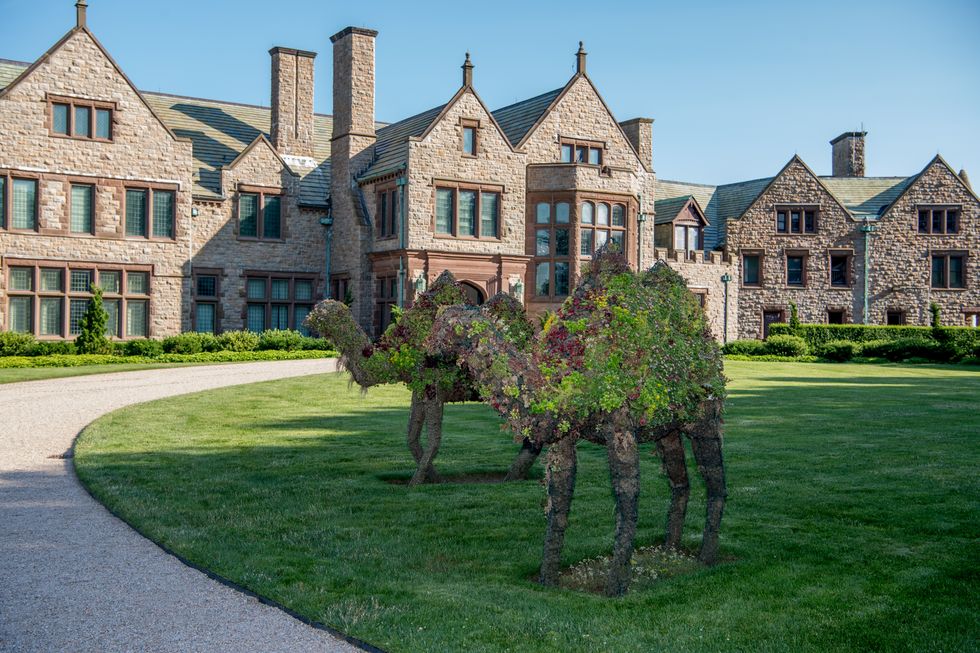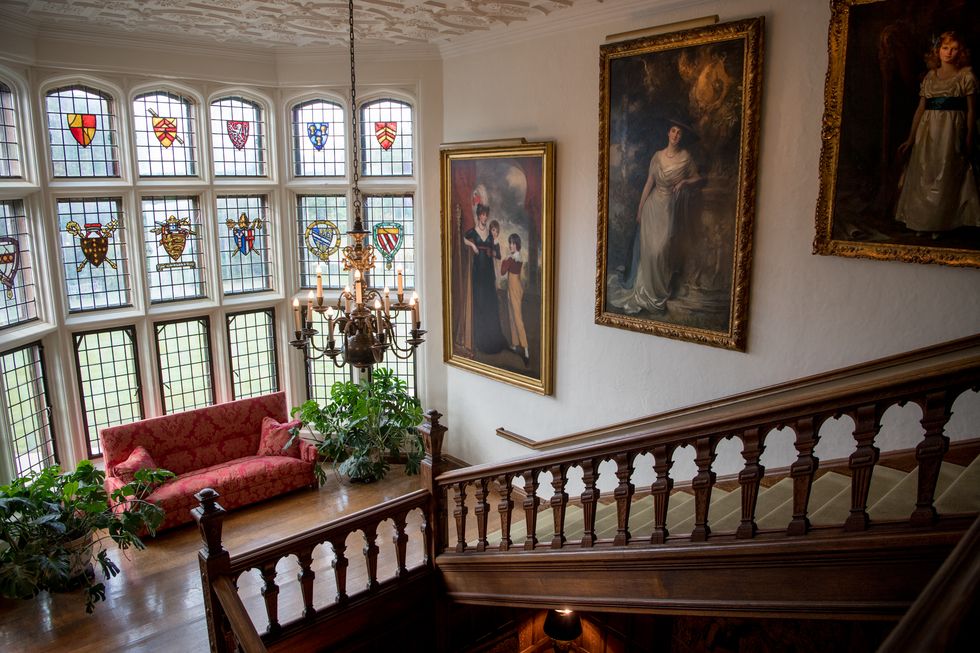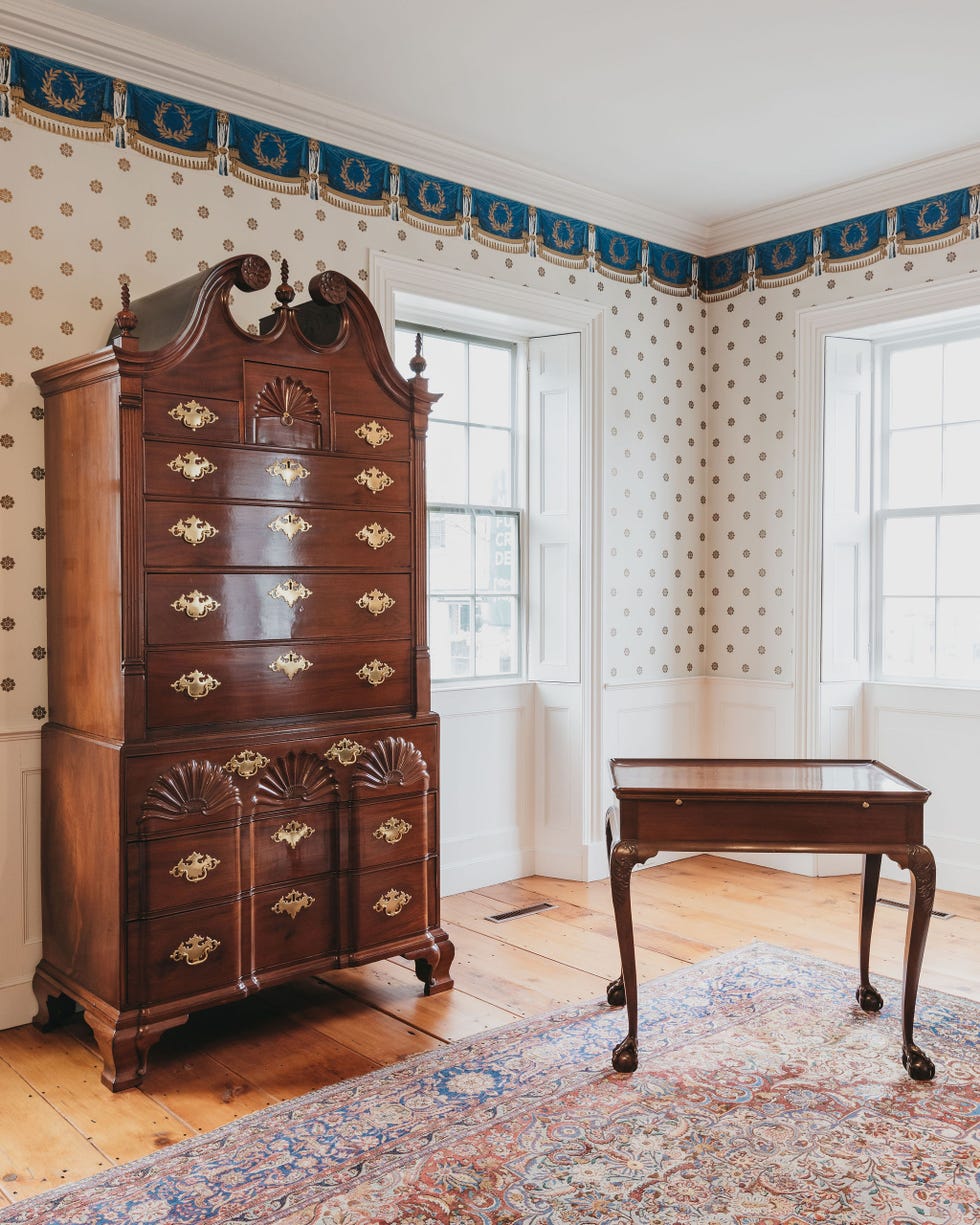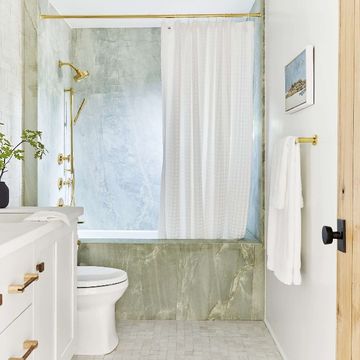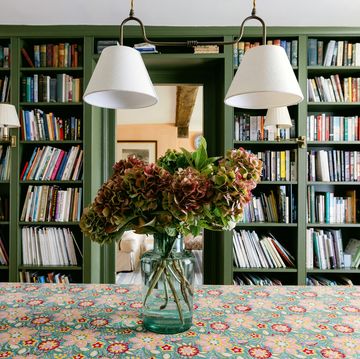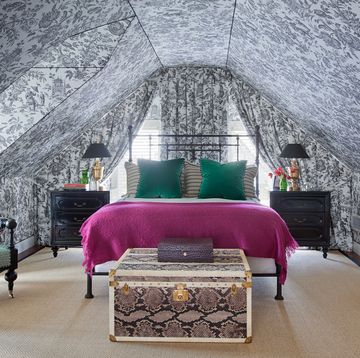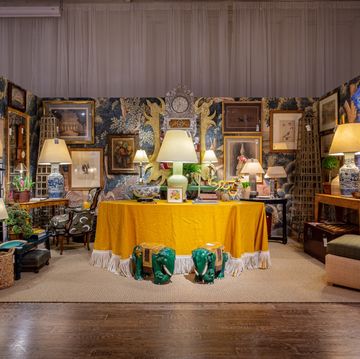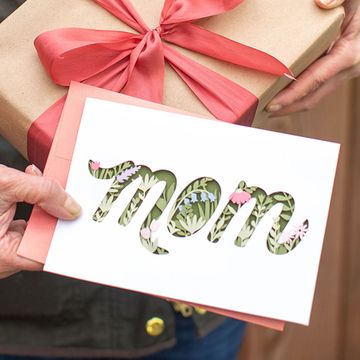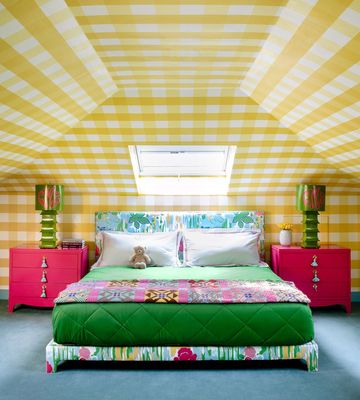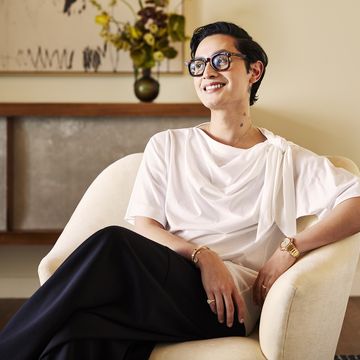Given that we are nearing the end of Historic Preservation Month, it's especially appropriate now to honor people who have ensured the preservation and restoration of numerous historic sites. Among these champions are two women who you've likely heard of—but who are not particularly well known for their efforts in preservation, per se: Jackie Kennedy and Doris Duke.
Although we often associate both Doris Duke and former First Lady Jackie Kennedy as being fashion icons, socialites, and all-around women of taste, they also played key roles in the preservation of historic homes and sites across the globe, including what is arguably the most famous dwelling in the United States—the White House—as well as the Olana State Historic Site and numerous properties in Newport, Rhode Island.
In 1961, during Jackie Kennedy’s first year as First Lady, she established the White House Historical Association, a non-profit organization that ensures the historical preservation of the People’s House. That same year, the abode was also declared a museum—thanks to legislation enacted by Congress—thereby allowing the general public to visit and tour the home of the President of the United States. This law guaranteed that any furnishings and decor that the president deemed historic or of artistic significance could not be sold, which is something that did, unfortunately, occur in the White House’s history. Since then, any designated items that are not on display in the historic home are sent to the Smithsonian Institution, where they are preserved, exhibited, studied, or kept in storage.
"Until the Kennedy administration, there was not a professional curator working at the White House to handle objects, catalogue new acquisitions, and research items already in the permanent collection,” says Senior Historian of the White House Historical Association—and the Vice President of the David M. Rubenstein National Center for White House History—Matthew Costello, PhD. “When it became clear that the federal government would not appropriate funds to acquire fine and decorative arts, Mrs. Kennedy and others worked to create the White House Historical Association.”
Love knowing the latest design trends? Let's keep up with them together.
Through the creation of the White House Historical Association, “the White House has grown its collection of fine and decorative arts extensively,” says Costello. It has also helped fund conservation and preservation projects, portraits of both presidents and first ladies, and state services, in addition to assisting with research and education initiatives, and helping “acquire long-lost pieces of history that were removed from the White House either by the occupants or staff, or through public auction,” as Dr. Costello points out, “which still happened up until the Theodore Roosevelt administration.” Additionally, the WHHA fulfills its educational mission through teacher institutes, public programming, partnerships, and publications—all of which serve to enhance one’s knowledge of the White House, and the people who have lived and worked there, says Dr. Costello.
This year marks 60 years since the creation of the White House Historical Association, and, fortunately, Jackie Kennedy’s legacy and her passion for historic preservation are still being honored today. In fact, as Dr. Costello reveals, “every year on July 28, the Association hosts an event in honor of Mrs. Kennedy's birthday.” He adds that “we set aside that day to celebrate her legacy and commemorate her work in historic preservation” given that “in many ways, the Association is an extension of Mrs. Kennedy's legacy, and for the past sixty years we have had the privilege to carry her vision for the White House forward.”
Another historic home whose preservation Jackie Kennedy helped ensure is the Olana State Historic Site, which was built in 1872 in Hudson, New York, as the home of landscape painter Frederic Edwin Church. The Director of the Olana State Historic Site, Amy Hausmann—who was once a spokesperson for Grand Central Terminal, another site that Jackie Kennedy helped save—tells House Beautiful that the former First Lady became involved in Olana’s preservation following art historian David Huntington’s decision to rally “museum curators, directors, architects, journalists, and influential New Yorkers to aid in the campaign to save” Olana, given that the house and its contents were meant to head to auction shortly after the death of Frederic Church’s daughter-in-law, Sally Good Church, who left Olana and her estate to her nephew.
Soon enough, Mrs. John F. Kennedy served as the honorary chair of an exhibition dedicated to Frederic Edwin Church's paintings, held at M. Knoedler & Co. in New York City in May of 1966. She was joined by journalist Russell Lynes, who wrote extensively about saving Olana, says Hausmann. That same month, Jackie Kennedy wrote a letter to Lynes, stating that she had asked her brother-in-law, Senator Robert Kennedy, to see what he could do to help save Olana from being auctioned off. In the letter, the former First Lady stated that Senator Kennedy had recently spoken to Anthony John Travia, who was a member of the New York State Assembly at the time. Travia assured Senator Kennedy “that he would see that the [Lane-Newcombe] Bill was reported out of his committee on Monday,” referencing a bill that would authorize the State of New York to purchase Olana, thereby allowing the historic home to open to the public.
Fortunately, on June 27th, 1966, just over a month after Mrs. Kennedy’s letter was sent, then-Governor of New York Nelson Rockefeller signed the Lane-Newcombe Bill into law, on the steps of Olana. The following year, Olana officially opened for public tours, and it continues to operate as a historic house museum 54 years later.
For the 50th anniversary of the founding of Olana State Historic Site in 2016, Caroline Kennedy honored her late mother’s legacy in a video message to attendees of a gala that was held to celebrate the momentous occasion. “The saving of Frederic Church's Olana was a pivotal victory for historic preservation in 1966,” the former First Daughter declared. “This unique American landmark continues to contribute to our understanding of art and culture today.” After stating the importance of honoring “the work and foresight of those who saved Olana for future generations,” Caroline Kennedy added, “I'm proud to say that this effort included my mother, Jaqueline Kennedy. She loved Olana and the Hudson River Valley and advocated for the creation of Olana State Historic Site.”
Shortly after the completion of her preservation efforts at Olana, Jackie Kennedy was appointed vice president of her close friend Doris Duke’s newly created Newport Restoration Foundation, in 1968. Much like Mrs. Kennedy, Doris Duke helped save countless historic sites near and far—including 80 such places in Newport, Rhode Island alone. The tobacco heiress even transformed her father’s New Jersey estate—now known as Duke Farms, which is open to the public—by designing and installing one of the largest indoor garden displays in the U.S. Two of Doris Duke's own former residences are now available for civilians to visit as well: Shangri La, in Honolulu, Hawaii, and Rough Point, in Newport, Rhode Island.
Kristen Costa, the Senior Curator of the Newport Restoration Foundation, tells House Beautiful that “one of the only public statements Doris Duke ever made about her involvement with the NRF was in a November 1969 press release about the organization.” The socialite-turned-preservationist declared, “As a resident of Newport for many years, I have always taken pride in this unique and beautiful place, not only for its beauty but also for its historical heritage. Because of my interests, I have formed the Newport Restoration Foundation to preserve and restore the 18th-century buildings for future generations.”
Although little is known in regards to what ultimately led Doris Duke to pursue historic preservation work, Costa says there is evidence that Duke became interested in this field through her friend Katherine Warren, the founder of the Preservation Society of Newport County. “Newport legend has it that the women decided together that one would take on saving the city’s 19th-century heritage (Katherine Warren and PSNC) and the other (Doris Duke) would preserve the 18th-century architecture,” reveals Costa. Additionally, an August 1968 letter from Warren to Duke proves that the two women did, in fact, discuss saving historic properties in Newport prior to the creation of the Newport Restoration Foundation in 1968.
Meanwhile, Jackie Kennedy served on the NRF board until the early 1980s, says Costa, along with other board members including Alletta Morris McBean, Katherine Warren, and Oatsie Charles. “They all served as advisers to Doris and the NRF staff in helping to make decisions about houses to purchase and restore.” When it came to Jackie and Doris’s working relationship, the former First Lady helped Ms. Duke “make connections with historic reproduction wallpaper companies that were used during Jackie’s time in the White House,” in order to help with wallpaper-related decisions at the Whitehorne House Museum.
As for Ms. Duke’s involvement with the foundation, she oversaw “every aspect” of the NRF’s operations, providing her stamp of approval on numerous architectural drawings, design plans, and invoices. “While she relied on the recommendations of trusted advisors including NRF’s first director Francis Comstock, Doris had the final say on paint colors, design layouts, and which houses to buy and preserve,” says Costa. “Each house was thoroughly documented before restoration by architects and photographers.” Additionally, the Foundation has in its possession interviews with former NRF preservation crew members “who have stories of how Doris changed a paint color in a room, or decided which door fixtures to use.”
Since the Newport Restoration Foundation was founded 53 years ago, it has restored and preserved more than 80 structures, all of which date back to the 1700s and 1800s, resulting in one of the largest collections of period architecture owned by an organization in the United States. To honor Doris Duke’s impressive and enduring imprint, the NRF holds the annual Doris Duke Historic Preservation Awards, “a joint program with the city of Newport that recognizes exemplary historic preservation projects and individuals who have made significant contributions to the preservation of Aquidneck Island,” says Costa.
Evidently, both Jackie Kennedy and Doris Duke certainly accomplished what they set out to do when they pursued their passions for historic preservation, especially when it came to historic homes. Between the White House, the Olana State Historic Site, and the more than eighty sites preserved by the Newport Restoration Foundation, there is no shortage of sites that these two remarkable women ensured the conservation of. And best of all, we're able to visit many of these dwellings today!
Follow House Beautiful on Instagram.
